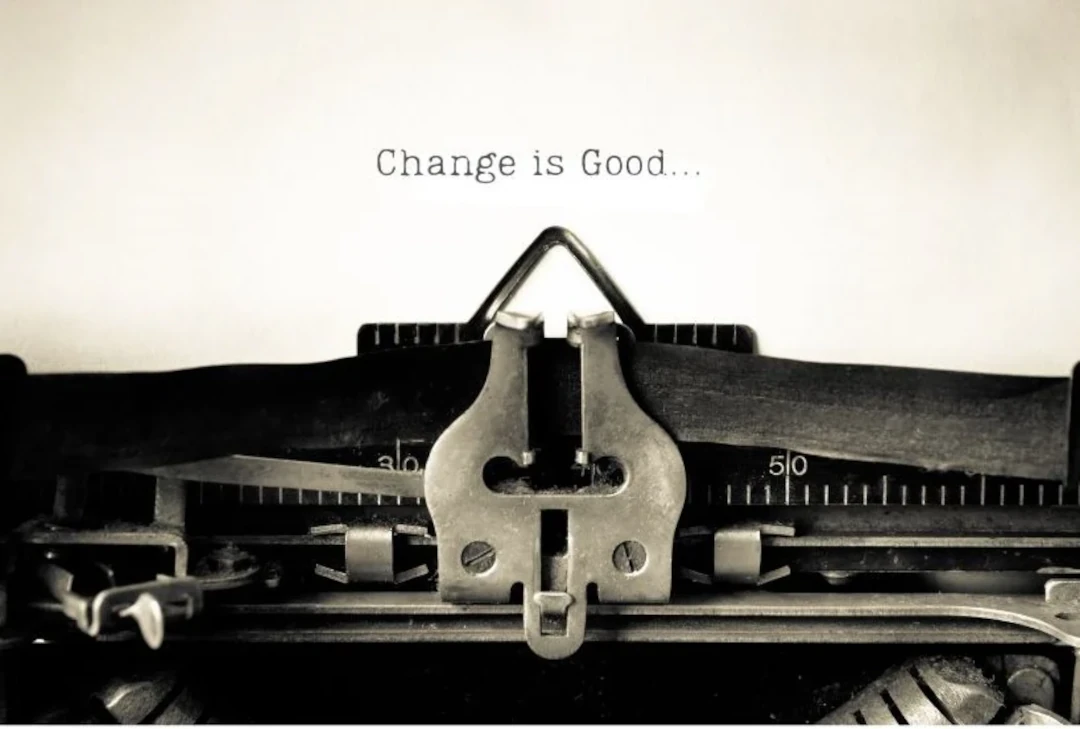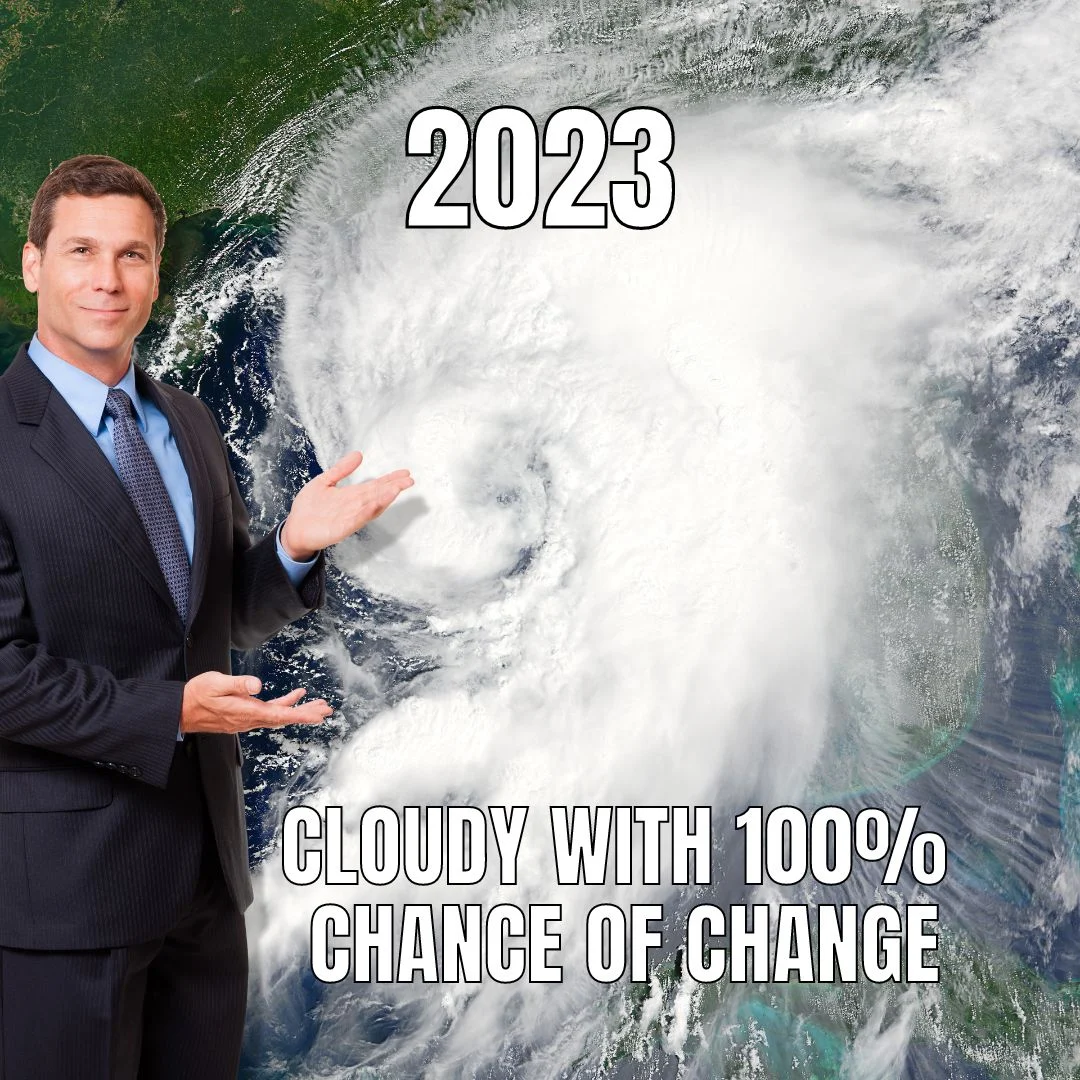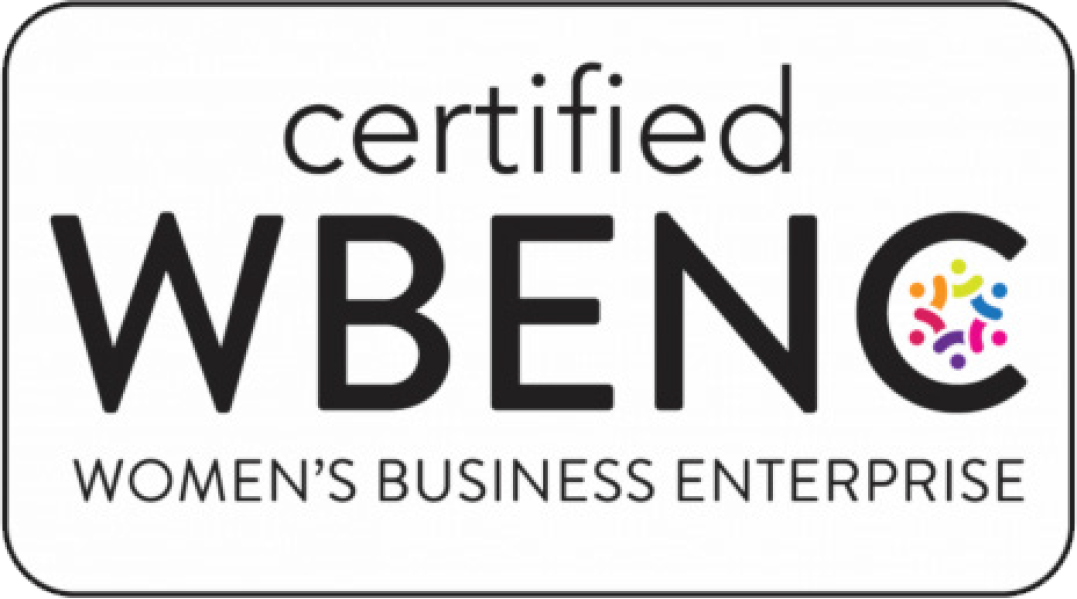
Three Fresh Ideas: The Change Edition

Vol. 1, Edition 2, February 2023
Hi, readers!
Now that January is behind us, allow me a confession. I’m the only one you’re likely to meet who calls the first month of the year her favorite.
For me, January is about moving beyond the holiday excesses and clearing the decks for what’s to come. It’s time for new beginnings and the giddy optimism that springs from making plans for improvement. And February? That’s when the fireworks start.
No matter how much I relish change, I’m fully aware most people don’t, especially not in the workplace. We talk to many comms pros every month, often about the changes coming in 2023 and beyond. Driving real change through communications is a tough job.
So what better time to introduce the new Change Communications Model from WordsFresh. I hope you find this concise, employee-centered framework helpful as you strategize communications for your new year.
May all your changes be good ones,+

Mary Pat Nimon
President
idea one
Are you driving change? Use our framework for communications.

If you’re a comms pro charged with driving a change in your organization, you need to know this sobering stat: 70% of change programs fail to meet their goals, according to the consultancy McKinsey & Company. While there are many reasons behind poor performance, we’ve seen strategic change communications have a huge impact.
Over the years, the WordsFresh team has had a front-row seat for some amazing success stories. Our clients — many of them working in Fortune 500 companies — have successfully led some incredible changes in their organizations, such as:
- Rallying employees around a new corporate goal
- Unifying a department to reflect the leader’s vision
- Introducing company values
- Rolling out a mission statement
- Unveiling a new HR initiative
- Encouraging employees to return to in-office work
- Shifting attitudes about diversity
- Driving adoption of new tech tools
Based on our experience working in change communications as well as industry research into behavior change, we’ve developed the WordsFresh Change Communications Model. We use this framework ourselves to plan phased communications that deliver the messages people need to hear most, when they need to hear them. We offer it here to make it a bit easier for anyone facing similar challenges.
How it works
As in all communications, knowing your audience is key to getting your desired result. The WordsFresh model reflects the employee’s point of view, not the CEO’s. At each phase, communications are planned to reflect employees’ changing mindsets and communication needs.
I’m Aware:
Mindset: Something new is happening. I wonder how it’s going to impact me. It might be good or bad. Probably bad. At the very least, it will be inconvenient.
Communication needs: If you inspire, interest or even entertain me, I’ll keep an open mind. Give me a reason to root for this. Have a purpose. Be optimistic. If you involve me, even better.
I Understand:
Mindset: I get it. I see why the change is important. I’ll invest some time to fully grasp what’s happening.
Communication needs: I want to know what the leaders say. I need to understand why the change is happening and what it means for me and my work. But remember, I’m busy here. Be clear. Make everything as easy for me as possible.
I Act:
Mindset: Okay, I’ll engage. I’m shifting some work practices or attitudes. I’m putting the plans into action. I hope this isn’t one of those “flavor-of-the-month” kinds of changes the company is always putting out.
Communication needs: Who else is on board? I’d like to see examples of how to make these changes in my everyday life. Let’s see it in action and hear some success stories.
I Grow:
Mindset: This new way of doing things is my new normal. I feel comfortable now. I’ve learned some things during this transition. I have ideas about how we can make things even better.
Communication needs: As I grow, my questions are getting more impactful. How can we keep improving? Who will listen to my ideas? What’s next? I’d like some encouragement to keep going and to learn.
For as many success stories as we’ve seen, we’ve observed some missteps as well. For example, we saw a large company announce an enterprise-wide change to the payroll system, explain the change in detail and instruct employees to move their information to the new platform – all in the dense text of a single (lengthy) email. That’s not exactly a recipe for gaining buy-in and adoption.
Any kind of change, even a positive one, can be unsettling, disrupting patterns that may have been in place for years. The WordsFresh Change Communications Model can help you can overcome this inertia and lead your organization toward meaningful change that hits your organization’s goals!
idea two
Want to change things up with fresh ideas? It helps to be positive.

Clients often remark that WordsFresh writers bring lots of fresh ideas to the table. One recently asked, “Where do you get all these ideas?”
While it’s hard to pinpoint the genesis of an idea, there are some conditions that are fertile for creative thinking.
Here’s one you may have overlooked: Positivity.
There’s an impressive amount of research in the field of creativity. One particularly interesting study found strong links between positive emotions and creative thinking. And it reflects what we’ve seen in our agency.
In her landmark paper The Broaden-and-Build Theory of Positive Emotions, researcher Barbara L. Fredrickson writes, “…positive emotions broaden an individual’s momentary thought–action repertoire: joy sparks the urge to play, interest sparks the urge to explore, contentment sparks the urge to savour and integrate….”
Play, explore, savor and integrate…. Those are great ways to generate new ideas. The researchers agreed, finding that positive emotions broaden a person’s mindset and promote “discovery of novel and creative actions, ideas and social bonds….”
Where do WordsFresh writers get their ideas? Every one of them is different. But it’s no coincidence that a core WordsFresh value is optimism. That’s positivity by another name.
The next time you face a creative challenge, take time to generate some positive emotions (like optimism) for yourself and your team. We’re positive it will help.?
idea three
Change this to give your brain a break.

Want to get more done? Try doing a little less.
That is, spending a little less time checking email, scrolling social media or glancing at your smartphone to see what you’re missing. Disconnecting can be good for your brain and your body.
After all, being slightly less connected can mean being more creative. And that’s at the root of everything we – as communicators, as marketers – want to do.
Give yourself some limits
If you haven’t tried setting screentime limits for yourself (not just for your kids), you’ll be surprised at how many hours you’re spending staring at your phone or pad. Just seeing the data may encourage you to put down your device.
When you get back to work, you’ll likely look at everything with fresh eyes.
Try this on your phone:
If you have an Apple device (phone or tablet), go to Settings > Screen Time.
- Tapping ‘Turn on Screen Time’ will help you keep track of the hours you’re spending online.
- Tap ‘App Limits’ to curb how much time you spend each day on social media apps or games.
- Turning on ‘Down Time’ will let you receive emails (and access only the apps you really need) until the end of the day.
If you have an Android phone, go to Settings > Digital Wellbeing.
- Tap the ‘Weekly Report’ icon to see how much time you’re spending and which apps you’re using most.
- Select the ‘Screen Time’ option and choose ‘Goal’ to set your preferred budget for hours and minutes.
- Tap ‘App Timers’ and then tap the hourglass icon to select specific apps to limit.
Apparently more than half of us spend between five and six hours each day on our smartphones – not counting work time! That’s a lot of time you could be spending doing something else for yourself, to recharge.
Give yourself a break.
(& a meme)


Three Fresh Ideas: The Change Edition

Vol. 1, Edition 2, February 2023
Hi, readers!
Now that January is behind us, allow me a confession. I’m the only one you’re likely to meet who calls the first month of the year her favorite.
For me, January is about moving beyond the holiday excesses and clearing the decks for what’s to come. It’s time for new beginnings and the giddy optimism that springs from making plans for improvement. And February? That’s when the fireworks start.
No matter how much I relish change, I’m fully aware most people don’t, especially not in the workplace. We talk to many comms pros every month, often about the changes coming in 2023 and beyond. Driving real change through communications is a tough job.
So what better time to introduce the new Change Communications Model from WordsFresh. I hope you find this concise, employee-centered framework helpful as you strategize communications for your new year.
May all your changes be good ones,+

Mary Pat Nimon
President
idea one
Are you driving change? Use our framework for communications.

If you’re a comms pro charged with driving a change in your organization, you need to know this sobering stat: 70% of change programs fail to meet their goals, according to the consultancy McKinsey & Company. While there are many reasons behind poor performance, we’ve seen strategic change communications have a huge impact.
Over the years, the WordsFresh team has had a front-row seat for some amazing success stories. Our clients — many of them working in Fortune 500 companies — have successfully led some incredible changes in their organizations, such as:
- Rallying employees around a new corporate goal
- Unifying a department to reflect the leader’s vision
- Introducing company values
- Rolling out a mission statement
- Unveiling a new HR initiative
- Encouraging employees to return to in-office work
- Shifting attitudes about diversity
- Driving adoption of new tech tools
Based on our experience working in change communications as well as industry research into behavior change, we’ve developed the WordsFresh Change Communications Model. We use this framework ourselves to plan phased communications that deliver the messages people need to hear most, when they need to hear them. We offer it here to make it a bit easier for anyone facing similar challenges.
How it Works
As in all communications, knowing your audience is key to getting your desired result. The WordsFresh model reflects the employee’s point of view, not the CEO’s. At each phase, communications are planned to reflect employees’ changing mindsets and communication needs.
I’m Aware:
Mindset: Something new is happening. I wonder how it’s going to impact me. It might be good or bad. Probably bad. At the very least, it will be inconvenient.
Communication needs: If you inspire, interest or even entertain me, I’ll keep an open mind. Give me a reason to root for this. Have a purpose. Be optimistic. If you involve me, even better.
I Understand:
Mindset: I get it. I see why the change is important. I’ll invest some time to fully grasp what’s happening.
Communication needs: I want to know what the leaders say. I need to understand why the change is happening and what it means for me and my work. But remember, I’m busy here. Be clear. Make everything as easy for me as possible.
I Act:
Mindset: Okay, I’ll engage. I’m shifting some work practices or attitudes. I’m putting the plans into action. I hope this isn’t one of those “flavor-of-the-month” kinds of changes the company is always putting out.
Communication needs: Who else is on board? I’d like to see examples of how to make these changes in my everyday life. Let’s see it in action and hear some success stories.
I Grow:
Mindset: This new way of doing things is my new normal. I feel comfortable now. I’ve learned some things during this transition. I have ideas about how we can make things even better.
Communication needs: As I grow, my questions are getting more impactful. How can we keep improving? Who will listen to my ideas? What’s next? I’d like some encouragement to keep going and to learn.
For as many success stories as we’ve seen, we’ve observed some missteps as well. For example, we saw a large company announce an enterprise-wide change to the payroll system, explain the change in detail and instruct employees to move their information to the new platform – all in the dense text of a single (lengthy) email. That’s not exactly a recipe for gaining buy-in and adoption.
Any kind of change, even a positive one, can be unsettling, disrupting patterns that may have been in place for years. The WordsFresh Change Communications Model can help you can overcome this inertia and lead your organization toward meaningful change that hits your organization’s goals!
idea two
Want to change things up with fresh ideas? It helps to be positive.

Clients often remark that WordsFresh writers bring lots of fresh ideas to the table. One recently asked, “Where do you get all these ideas?”
While it’s hard to pinpoint the genesis of an idea, there are some conditions that are fertile for creative thinking.
Here’s one you may have overlooked: Positivity.
There’s an impressive amount of research in the field of creativity. One particularly interesting study found strong links between positive emotions and creative thinking. And it reflects what we’ve seen in our agency.
In her landmark paper The Broaden-and-Build Theory of Positive Emotions, researcher Barbara L. Fredrickson writes, “…positive emotions broaden an individual’s momentary thought–action repertoire: joy sparks the urge to play, interest sparks the urge to explore, contentment sparks the urge to savour and integrate….”
Play, explore, savor and integrate…. Those are great ways to generate new ideas. The researchers agreed, finding that positive emotions broaden a person’s mindset and promote “discovery of novel and creative actions, ideas and social bonds….”
Where do WordsFresh writers get their ideas? Every one of them is different. But it’s no coincidence that a core WordsFresh value is optimism. That’s positivity by another name.
The next time you face a creative challenge, take time to generate some positive emotions (like optimism) for yourself and your team. We’re positive it will help.?
idea three
Change this to give your brain a break.

Want to get more done? Try doing a little less.
That is, spending a little less time checking email, scrolling social media or glancing at your smartphone to see what you’re missing. Disconnecting can be good for your brain and your body.
After all, being slightly less connected can mean being more creative. And that’s at the root of everything we – as communicators, as marketers – want to do.
Give yourself some limits
If you haven’t tried setting screentime limits for yourself (not just for your kids), you’ll be surprised at how many hours you’re spending staring at your phone or pad. Just seeing the data may encourage you to put down your device.
When you get back to work, you’ll likely look at everything with fresh eyes.
Try this on your phone:
If you have an Apple device (phone or tablet), go to Settings > Screen Time.
- Tapping ‘Turn on Screen Time’ will help you keep track of the hours you’re spending online.
- Tap ‘App Limits’ to curb how much time you spend each day on social media apps or games.
- Turning on ‘Down Time’ will let you receive emails (and access only the apps you really need) until the end of the day.
If you have an Android phone, go to Settings > Digital Wellbeing.
- Tap the ‘Weekly Report’ icon to see how much time you’re spending and which apps you’re using most.
- Select the ‘Screen Time’ option and choose ‘Goal’ to set your preferred budget for hours and minutes.
- Tap ‘App Timers’ and then tap the hourglass icon to select specific apps to limit.
Apparently more than half of us spend between five and six hours each day on our smartphones – not counting work time! That’s a lot of time you could be spending doing something else for yourself, to recharge.
Give yourself a break.
(& a meme)

 SUBSCRIBE TO
SUBSCRIBE TO
Three fresh ideas (and a meme)
Our monthly take on today’s marketing and communications topics… and a little fun, too.


